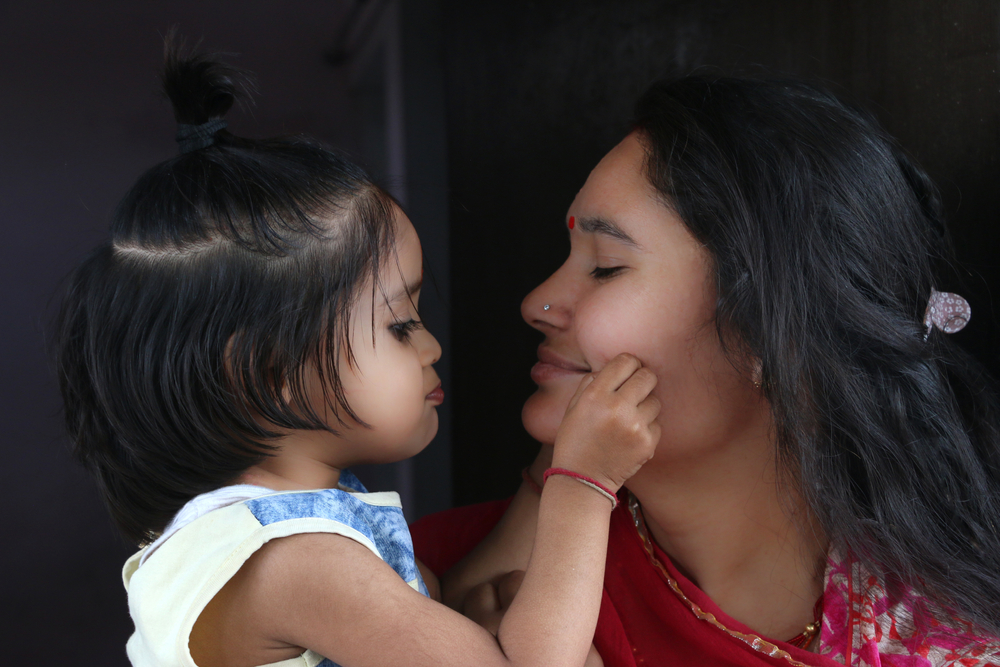
This new Lancet Psychiatry Commission addresses wide-reaching aspects of Intimate Partner violence (IPV), which is described as physical and sexual violence, controlling and coercive behaviours and emotional abuse (Oram et al, 2022).
According to the #IPVmentalhealth report, physical or sexual IPV is thought to affect 27% of women and girls aged 15+ globally.
The Commission was initiated by Violence Abuse and Mental Health Network, an interdisciplinary research network funded by UK Research and Innovation, and is authored by international experts.
The aim was to present important findings in IPV research across four main topics, with a view to furthering understanding and prevention of IPV, and reducing effects on mental health:
- IPV effects on mental health
- IPV across life course
- Measurements of IPV
- How the mental health system can be changed to address IPV
The Commission highlights the catastrophic effects of IPV on individuals’ safety, health and wellbeing and education. The introduction gives a balanced overview of different models of the causes of IPV.
Watch the #IPVmentalhealth video
The Lancet Psychiatry Commission on Intimate Partner Violence and Mental Health was published on 1st June 2022 and launched at the Royal College of Psychiatrists International Congress in Edinburgh on 20th June 2022.
In this video, Prof Helen Fisher, Suzanne Jacobs, Prof Kelsey Hegarty, Prof Soraya Seedat and Prof Helen Minnis present the Commission and explain how it can be used by health and care practitioners, policy makers, commissioners, charities/NGOs and researchers.
Methods
The Commission (Oram et al, 2022) involved synthesising academic, clinical and experimental IPV (intimate partner violence) research from a range of angles including biological, psychological and social perspectives. It is not clear exactly how sources were selected, but it is stated that database searches to identify most recent evidence were used, as well as guidelines from national and international bodies. The commission included Cochrane systematic reviews and meta-analyses, and highlighted key findings.
Authors include a variety of professionals from countries including UK, USA, Peru, India, Malaysia and South Africa. The group is made up of researchers and scientists, psychiatrists, psychologists, epidemiologists and public health workers, and many are themselves IPV survivors.

Nearly 1 in 3 women and girls aged 15+ globally are affected by physical or sexual intimate partner violence (Oram et al, 2022).
Results
The commission highlights important findings in each of the four main topics, and focuses mostly on effects of IPV on mental health, and what is missing from current services, research and policy that could reduce IPV harm and prevalence.
Effects on mental health are the focus of the review; a particularly interesting finding is that stopping abuse could decrease mental health problems by a quarter (Howard et al, 2014). Unsurprisingly, IPV is associated with increased risk of mental health disorders; furthermore IPV in adulthood doubles risk of depression, independent of abuse in childhood (Ouellet-Morin et al, 2015). The commission also highlights the bidirectional relationship between IPV and its associated mental health problems; women with depressive symptoms are more likely to experience abuse than those without symptoms (Devries et al, 2013).
Mental health problems are also a risk factor for perpetration of IPV, with alcohol and drug abuse being the most significant risk factors for increasing IPV perpetration (odds ratio 7 and 7.7 compared to general population) (Oran et al, 2014; Yu et al, 2020). Depression and anxiety were also risk factors for IPV perpetration (Oran et al, 2014; Yu et al, 2020), as well as socioeconomic factors, psychological traits, and neurodevelopmental disorders such as ADHD (Buitelaar et al, 2016). Understanding these links with mental health disorders and IPV are critical; the commission points out that in regards to IPV perpetrators, denial/minimisation of associations between IPV and mental health disorders are likely to reduce efficacy of treatments and risk assessments for modifiable risk factors, and could even increase IPV prevalence (Morgan et al, 2018)
Looking at IPV across the lifespan revealed that physical/sexual abuse or IPV during childhood doubles the risk of committing IPV in men, and of experiencing IPV in women (Whitfield et al, 2003). Traumatic stress during pregnancy is associated with a variety of negative outcomes including low birth weight, obstetric complications, epigenetic changes and higher cortisol in utero, which can cause mental health problems in later life (Sanchez et al, 2013; Chan et al, 2017). IPV in pregnancy is also associated with aggressive behaviours in children and lack of remorse (Howard et al, 2012). Importantly, negative outcomes for children resulting from IPV during pregnancy can be mediated by poverty, mental sensitivity towards the child, postnatal IPV and nutrition (Sanchez et al, 2013; Stein et al, 2014).
The commission highlights that there are many modifiable factors which influence risk of IPV perpetration (see implications for practice below). It also suggests how IPV fits into the wider context of society; with risk being increased by violence-supportive norms such as hyper-masculinity and gender-inequality. With regards to future research on mental health in general, IPV should be measured as a potential moderator of treatment response in intervention studies.
Key gaps in knowledge are also highlighted, such as
- Research on the impact that IPV has on mental health interventions
- Understanding of assessment, identification and treatment for those who commit IPV
- Understanding of how to intervene to reduce risk
- How to support children experiencing IPV
- General research issues such as lack of valid controls, small sample sizes and lack of long-term follow up in IPV studies.
Quotes from survivors are also included, which give insight into the sense of self-doubt and powerlessness which accompanies living with IPV.

Research shows that stopping intimate partner violence and abuse could reduce mental health problems by one quarter (Howard et al, 2014).
Conclusions
The authors conclude that IPV (intimate partner violence) is a far-reaching issue effecting individuals around the world, particularly women and girls, with significant impacts on mental health. It also highlights the cyclical nature of IPV, in which survivors are more likely to go on to experience more IPV, or commit IPV, depending on gender.
The commission details how there are still vast gaps in knowledge regarding research on IPV causes, prevalence and effects, and how mental health services, policy and society can improve outcomes and reduce risk.
Strengths and limitations
Strengths
- This Lancet Commission gives a comprehensive overview on IPV research and highlights the complexity of its effects and causes. IPV survivor’s voices and perspectives were included, both in direct quotes, and via their involvement in this commission.
- Useful points are made particularly about gaps in knowledge and how services and research on IPV should be improved, and includes reflective questions for practitioners.
- Research from other countries was included, and limitations surrounding under researched topics/ locations acknowledged.
Limitations
- Biological impacts of IPV were only briefly outlined, for example it is stated “Epigenetic changes are associated with IPV” without outlining these changes.
- There is no indication of how sources were selected, meaning potential selection bias in papers included. There is no evaluation of most included sources, although it is noted that several Cochrane meta-analysis are included, boosting the reliability of the commission.
- The commission highlights how mental health diagnosis for IPV perpetrators is useful, but suggests diagnosis for victims is harmful, without providing much evidence of this. It gives a fairly one-sided view, and fails to acknowledge potential positive outcomes from diagnosis.

Intimate partner violence is a far-reaching issue effecting individuals around the world, particularly women and girls, with significant impacts on mental health.
Implications for practice
The commission gives an overview of IPV (intimate partner violence) issues which are useful for those who work in mental health services, research, and policy. It highlights future work and changes needed to reduce IPV and its associated harm. There are three important areas of implications:
Improving research
- Mental health interventions should consider IPV when evaluating outcomes
- High quality epidemiological studies on IPV are needed. These should include function and wellbeing as outcomes instead of/as well as health
- Cross-cultural differences should be considered (a WHO study found no cross-cultural consensus on the behaviours constituting psychological abuse).
Reducing risk of perpetration of IPV
- Addressing drug and substance misuse in perpetrators of IPV is effective
- More research on other kinds of treatment is needed to prove utility of more general programs.
Reducing harm from IPV
- Interventions must not take power away from individuals
- Prioritise safety and ask about children
- Use a patient-centred approach where survivors have a voice and can speak their mind. This is critical in healing self-determination and autonomy
- New models are needed to integrate specialist IPV interventions with broader mental health therapies.
What’s in the Commission for you?
This 10-minute long section of the #IPVmentalhealth video explains how different people can use the Commission. We recommend you watch it if you are a health or care practitioner, a policy-maker, a commissioner, a researcher, or someone who works for a charity/NGO active in this space.
Statement of interests
Rachel Milligan currently works as an Associate Researcher (ad hoc) at Traumascapes CIC; a multifaceted organisation helping trauma survivors through art and science.
Links
Primary paper
Oram S, Fisher HL, Minnis H, Seedat S, Walby S, Hegarty K, Rouf K, Angénieux C, Callard F, Chandra PS, Fazel S, Garcia-Moreno C, Henderson M, Howarth E, MacMillan HL, Murray LK, Othman S, Robotham D, Rondon MB, Sweeney A, Taggart D, Howard LM. (2022) The Lancet Psychiatry Commission on intimate partner violence and mental health: advancing mental health services, research, and policy. Lancet Psychiatry. 2022 Jun;9(6):487-524. doi: https://doi.org/10.1016/s2215-0366(22)00008-6
The Lancet Psychiatry landing page for the Commission on Intimate Partner Violence and Mental Health.
Other references
Buitelaar NJ, Posthumus JA, Buitelaar JK. ADHD in childhood and/ or adulthood as a risk factor for domestic violence or intimate partner violence: a systematic review. J Atten Disord 2016; 24: 1203–14.
Chan KL, Lo CK, Ho FK, Leung WC, Yee BK, Ip P. The association between intimate partner violence against women and newborn telomere length. Transl Psychiatry 2019; 9: 1–8. 130
Devries KM, Mak JY, Bacchus LJ, et al. Intimate partner violence and incident depressive symptoms and suicide attempts: a systematic review of longitudinal studies. PLoS Med 2013; 10: e1001439.
Howard AL, Kimonis ER, Muñoz LC, Frick PJ. Violence exposure mediates the relation between callous-unemotional traits and offending patterns in adolescents. J Abnorm Child Psychol 2012; 40: 1237–47.
Howard LM, Shaw S, Oram S, Khalifeh H, Flynn S. Violence and mental health. In Davies SC, ed. Annual Report of the Chief Medical Officer 2013. Public Mental Health Priorities: Investing in the Evidence. London: Department of Health, 2014: 227–38.
Morgan AJ, Reavley NJ, Ross A, San Too L, Jorm AF. Interventions to reduce stigma towards people with severe mental illness: systematic review and meta-analysis. J Psychiatr Res 2018; 103: 120–33.
Oram S, Trevillion K, Khalifeh H, Feder G, Howard L. Systematic review and meta-analysis of psychiatric disorder and the perpetration of partner violence. Epidemiol Psychiatr Sci 2014; 23: 361–76.
Ouellet-Morin I, Fisher HL, York-Smith M, Fincham-Campbell S, Moffitt TE, Arseneault L. Intimate partner violence and new-onset depression: a longitudinal study of women’s childhood and adult histories of abuse. Depress Anxiety 2015; 32: 316–24.
Sanchez SE, Alva AV, Chang GD, et al. Risk of spontaneous preterm birth in relation to maternal exposure to intimate partner violence during pregnancy in Peru. Matern Child Health J 2013; 17: 485–92.
Stein A, Pearson RM, Goodman SH, et al. Effects of perinatal mental disorders on the fetus and child. Lancet 2014; 384: 1800–19.
Stewart DE, Vigod SN, MacMillan HL, et al. Current reports on perinatal intimate partner violence. Curr Psychiatry Rep 2017;
Whitfield CL, Anda RF, Dube SR, Felitti VJ. Violent childhood experiences and the risk of intimate partner violence in adults: assessment in a large health maintenance organization. J Interpers Violence 2003; 18: 166–85.
Yu R, Nevado-Holgado AJ, Molero Y, et al. Mental disorders and intimate partner violence perpetrated by men towards women: a Swedish population-based longitudinal study. PLoS Med 2020; 16: e1002995.
